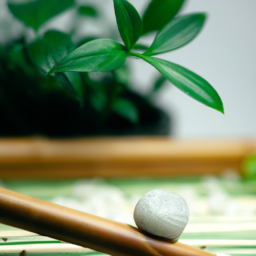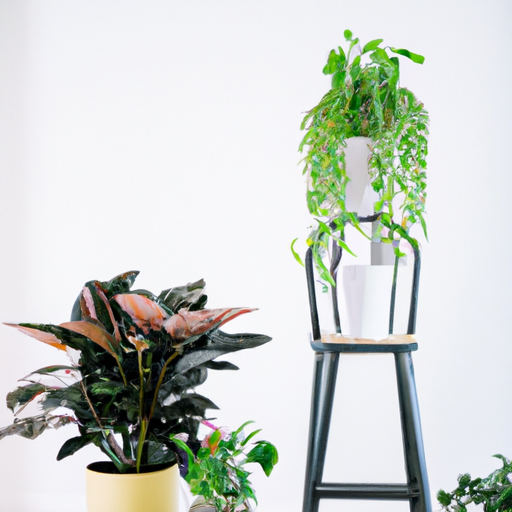
Are you looking for a way to bring a sense of peace and tranquility into your home? Look no further than Zen gardens. These miniature landscapes have been used for centuries to cultivate a sense of calm and serenity, and now you can bring that same tranquility indoors. In this blog post, we will explore the art of Zen gardens and how you can create your own oasis of peace right in the comfort of your own home. So, let’s dive in and discover the secrets of Zen gardens: cultivating tranquility indoors.
The History and Origins of Zen Gardens: Exploring the Ancient Art of Cultivating Tranquility Indoors
Introduction
Welcome to the fascinating world of Zen gardens, where tranquility takes root and flourishes indoors. In this article, we will delve into the history and origins of Zen gardens, exploring the ancient art of cultivating peace and serenity through these unique and captivating landscapes. Join us as we embark on a journey through time, uncovering the secrets behind these beautiful creations.
The Origins of Zen Gardens
The origins of Zen gardens can be traced back to ancient Japan, where they were initially developed as an integral part of Zen Buddhist temples. Zen Buddhism, which originated in China and was later introduced to Japan in the 12th century, emphasizes the practice of meditation and mindfulness. Zen gardens, also known as Japanese rock gardens or dry landscapes, were created to facilitate these practices.
Early Zen gardens were designed to represent a miniature version of the natural world, incorporating elements such as rocks, gravel, sand, and carefully placed moss or plants. These gardens were meticulously crafted to evoke a sense of tranquility and harmony, providing a peaceful space for meditation and contemplation.
While Zen gardens were initially limited to temple grounds, their popularity grew over time, and they eventually found their way into private residences, tea houses, and other public spaces. Today, Zen gardens can be found all around the world, captivating people with their timeless beauty and calming presence.
The Philosophy Behind Zen Gardens
At the heart of Zen gardens lies a deep philosophical meaning. These gardens are not merely decorative landscapes but are designed to convey profound spiritual and philosophical concepts. They serve as a visual representation of nature’s essence, inviting contemplation and reflection.
One of the fundamental principles behind Zen gardens is the concept of wabi-sabi, which embraces imperfection and impermanence. Zen gardens often feature asymmetrical designs and deliberately placed imperfections to reflect the transience of life and the acceptance of its inherent flaws.
Another key element of Zen gardens is the use of minimalism. These gardens are characterized by simplicity, with a focus on essential elements rather than excessive ornamentation. By removing distractions and unnecessary elements, Zen gardens create a sense of calm and allow the mind to enter a state of deep relaxation.
Creating Your Own Zen Garden Indoors
Now that we have explored the history and philosophy behind Zen gardens, let us guide you through the process of creating your own Zen garden indoors. Follow these steps to cultivate tranquility within the comfort of your own home:
Step 1: Choose a Suitable Space
Find a quiet and peaceful area in your home where you can create your Zen garden. It could be a corner of your living room, a dedicated meditation room, or even a small nook in your bedroom. Ensure that the space is free from distractions and provides a sense of privacy.
Step 2: Select the Materials
Traditionally, Zen gardens incorporate rocks, gravel, sand, and moss. However, you can also include other elements like miniature plants, small statues, or even a small water feature if you desire. Choose materials that resonate with you and create a harmonious atmosphere.
Step 3: Design the Layout
Consider the size and shape of your chosen space and plan the layout of your Zen garden accordingly. Remember to embrace asymmetry and simplicity in your design. Use rocks and gravel to create patterns or represent natural landscapes, and place them thoughtfully to evoke a sense of harmony.
Step 4: Add Vegetation and Moss
If you wish to incorporate greenery into your Zen garden, choose miniature plants or moss that thrive in indoor environments. These plants not only add a touch of nature but also help create a balanced and serene atmosphere.
Step 5: Cultivate Mindfulness
Once your Zen garden is complete, take the time to sit and immerse yourself in its tranquility. Use this space for meditation, reflection, or simply to find solace in the present moment. Allow the peaceful energy of your garden to envelop you and guide you towards a state of inner calm.
Conclusion
Zen gardens offer a window into the ancient art of cultivating tranquility indoors. By understanding their history, philosophy, and the process of creating your own Zen garden, you can embark on a journey of self-discovery and find solace in the beauty of these serene landscapes. So, go ahead, embrace the art of Zen gardening and let tranquility bloom within your home.

Design Principles for Creating a Zen Garden in Your Home: Cultivating Serenity and Peaceful Atmosphere Indoors
Welcome to the world of Zen gardens! In this guide, we will explore the design principles that will help you create a tranquil and peaceful atmosphere indoors. Whether you have a spacious home or a small apartment, you can cultivate serenity and bring the essence of Zen into your living space. Let’s dive in and discover the secrets of creating your own Zen garden.
1. Embrace Simplicity
Simplicity lies at the heart of Zen gardens. The aim is to create a space that is free from clutter and distractions, allowing your mind to find peace and tranquility. When designing your Zen garden, opt for minimalistic elements and avoid excessive ornamentation. Choose a few carefully selected items that resonate with the Zen philosophy.
Start by selecting a clean and neutral color palette. Shades of white, beige, and gray work well to create a calm and serene atmosphere. Keep furniture and decorations to a minimum, focusing on essential pieces that serve a purpose. Remember, less is more when it comes to Zen gardens.
Additionally, consider incorporating natural materials such as wood, stone, and bamboo into your design. These materials not only add an organic touch but also promote a sense of harmony with nature, a fundamental aspect of Zen gardens.
2. Create Balance and Harmony
Balance and harmony are key principles in Zen gardens. The goal is to achieve a visual equilibrium that promotes a sense of calmness and tranquility. To create balance, start by arranging your furniture and decorations in a symmetrical or asymmetrical manner, whichever appeals to you the most.
One way to introduce balance is by using the concept of yin and yang. Yin represents the feminine, soft, and passive energy, while yang represents the masculine, bold, and active energy. Incorporate both yin and yang elements in your Zen garden to create a harmonious balance. For example, pair soft cushions with a sturdy wooden bench or incorporate smooth pebbles alongside a textured rug.
Furthermore, consider the flow and movement within your space. Avoid creating obstacles or cluttered pathways. Instead, aim for a smooth and open layout that allows energy to flow freely. This promotes a sense of peace and tranquility, enabling you to fully immerse yourself in the Zen experience.
3. Engage the Senses
Zen gardens are not just visually appealing; they also engage the senses to create a holistic experience. When designing your indoor Zen garden, consider how you can stimulate each of the five senses: sight, sound, smell, touch, and even taste.
For sight, incorporate elements such as natural lighting, soft colors, and visually pleasing patterns. Use curtains or blinds to control the amount of natural light entering your space, creating a soothing ambiance. Hang artwork or photographs that evoke a sense of tranquility and peace.
When it comes to sound, consider adding a small water feature like a tabletop fountain or a mini waterfall. The gentle sound of flowing water can be incredibly calming and helps drown out external noise. Alternatively, you can play soft instrumental music or nature sounds to enhance the serene atmosphere.
Introduce pleasant scents into your Zen garden by using essential oils, scented candles, or fresh flowers. Fragrances such as lavender, jasmine, and sandalwood are known for their relaxing properties. The power of scent can transport you to a state of tranquility and help you unwind.
Don’t forget to incorporate tactile elements that invite touch and interaction. Place soft cushions or pillows on your seating area, use textured fabrics in your decor, and include natural materials like smooth stones or a small sand garden for finger tracing.
Lastly, consider adding a tea corner or a small herbal garden to engage the sense of taste. Enjoying a cup of herbal tea or plucking fresh herbs can be a meditative practice that further enhances the Zen experience.
By embracing simplicity, creating balance and harmony, and engaging the senses, you can transform your home into a sanctuary of tranquility and peace. Designing a Zen garden indoors allows you to escape the chaos of the outside world and find solace within your own space. So, take a deep breath, let go of the distractions, and embark on your journey to cultivate serenity and peacefulness in your home.

Benefits of Zen Gardens for Indoor Spaces: Enhancing Mental Well-being and Creating a Calming Environment
Introduction
Welcome to the world of Zen gardens, where tranquility and peace are cultivated indoors. In this article, we will explore the numerous benefits of having a Zen garden in your indoor space. From enhancing mental well-being to creating a calming environment, Zen gardens offer a unique and effective way to find inner peace amidst the chaos of modern life.
Creating a Calming Environment
One of the primary benefits of having a Zen garden in your indoor space is the creation of a calming environment. Zen gardens are designed to mimic the natural beauty of landscapes, often featuring rocks, sand, and carefully arranged plants. The minimalist and harmonious design of these gardens promotes a sense of tranquility and serenity.
By incorporating Zen principles into your indoor space, you can create a sanctuary where you can escape from the stresses of daily life. The simplicity and orderliness of a Zen garden can help to declutter your mind and provide a peaceful atmosphere for relaxation and introspection.
Moreover, the act of tending to a Zen garden can be a meditative experience in itself. Raking the sand or arranging the rocks requires focused attention and mindfulness, allowing you to fully immerse yourself in the present moment. This mindful engagement with the garden can have a profound impact on your mental well-being, reducing stress and promoting a sense of calmness.
Enhancing Mental Well-being
Zen gardens have been widely recognized for their ability to enhance mental well-being. The practice of cultivating and maintaining a Zen garden can serve as a form of therapy, providing a much-needed respite from the demands of everyday life. The repetitive and deliberate movements involved in tending to the garden can help to quiet the mind and induce a state of relaxation.
Studies have shown that engaging with nature, even in a simulated form such as a Zen garden, can have a positive impact on mental health. The presence of natural elements, such as plants and water features, can evoke a sense of tranquility and connection to the natural world. This connection to nature has been linked to reduced feelings of anxiety and depression, as well as improved overall well-being.
Additionally, the process of designing and arranging a Zen garden allows for self-expression and creativity. The act of creating a harmonious and balanced space can be deeply satisfying and fulfilling, providing a sense of accomplishment and pride. This creative outlet can contribute to a sense of purpose and fulfillment, further enhancing mental well-being.
Conclusion
In conclusion, incorporating a Zen garden into your indoor space can have a multitude of benefits for your mental well-being and overall sense of tranquility. By creating a calming environment and enhancing your connection to nature, these gardens offer a unique way to find inner peace and cultivate a sense of harmony in your life.
Whether you choose to design a small tabletop Zen garden or dedicate an entire room to this peaceful oasis, the benefits of cultivating tranquility indoors are undeniable. So, why not embark on this journey of self-discovery and create your own Zen garden today?
Here’s what we learned
Zen gardens are not just limited to outdoor spaces; they can also be created indoors to bring a sense of tranquility and peace to any room. These miniature landscapes are designed to mimic the beauty and simplicity of nature, allowing individuals to find solace and relaxation without stepping outside. Whether you live in a bustling city or simply want to create a serene atmosphere in your home, an indoor Zen garden can be the perfect addition to your space.
Indoor Zen gardens typically consist of a shallow container filled with sand or gravel, which serves as the base for arranging rocks, miniature plants, and other elements. The act of raking the sand in different patterns can be a meditative practice, helping to calm the mind and promote mindfulness. Additionally, the carefully placed rocks and plants symbolize different aspects of nature, creating a harmonious and balanced environment. By cultivating an indoor Zen garden, you can create a peaceful oasis where you can escape the stresses of daily life and find a moment of tranquility whenever you need it.
Your Questions Answered. Comprehensive FAQ:
Q1: What are Zen gardens and how can they cultivate tranquility indoors?
A1: Zen gardens, also known as Japanese rock gardens, are miniature landscapes designed to evoke a sense of peace and tranquility. They typically consist of carefully arranged rocks, sand or gravel, and sometimes moss or small plants. Cultivating a Zen garden indoors can create a serene and calming atmosphere, helping to reduce stress and promote relaxation. The simple act of raking the sand or arranging the rocks can also be a form of meditation, allowing you to find inner peace.
Q2: What materials do I need to create an indoor Zen garden?
A2: Creating an indoor Zen garden requires a few essential materials. You will need a shallow container or tray to hold the sand or gravel, small rocks or stones for arranging, and a small rake or wooden stick for creating patterns in the sand. Additionally, you may choose to incorporate moss, small plants, or other decorative elements to enhance the aesthetic appeal of your Zen garden. It’s important to select materials that resonate with your personal sense of tranquility.
Q3: How do I maintain an indoor Zen garden?
A3: Maintaining an indoor Zen garden is relatively simple. Regularly rake the sand or gravel to create smooth and even patterns, as this helps to promote a sense of order and calmness. Keep an eye out for any debris or fallen leaves that may disrupt the harmony of the garden, and gently remove them. If you have incorporated moss or small plants, ensure they receive adequate light and water according to their specific needs. Taking a few minutes each week to tend to your Zen garden can help preserve its tranquility.
Q4: Can I customize my indoor Zen garden to reflect my personal style?
A4: Absolutely! While traditional Zen gardens follow certain design principles, you can certainly customize your indoor Zen garden to reflect your personal style and preferences. Experiment with different arrangements of rocks, incorporate elements that hold personal significance, or choose a container that complements your existing décor. The goal is to create a space that brings you a sense of tranquility and aligns with your aesthetic taste.
Q5: What are the benefits of having an indoor Zen garden?
A5: Having an indoor Zen garden offers numerous benefits for your well-being. The serene and harmonious environment can help reduce stress, anxiety, and promote relaxation. Engaging with your Zen garden, whether it’s through raking the sand or simply gazing at its beauty, can serve as a form of meditation, helping to calm the mind and improve focus. Additionally, the presence of nature elements indoors can enhance air quality and create a soothing atmosphere, contributing to a sense of overall tranquility.
Emily Bloomfield is an interior designer and horticulturist specializing in incorporating indoor plants into interior spaces. With a background in both design and plant science, Emily offers a unique perspective on creating harmonious living environments through the synergy of greenery and aesthetics. Her creative ideas and innovative solutions make her a sought-after authority in the field.


